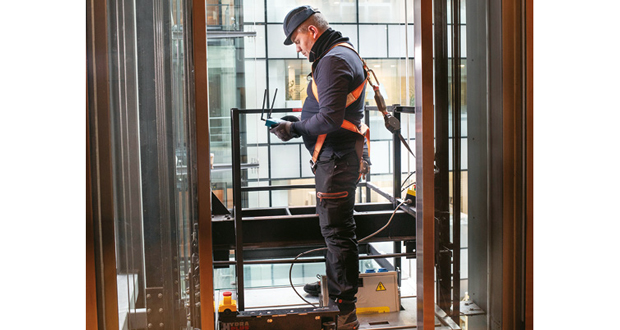The key to meeting rising equipment costs is innovation to improve efficiency and maximise building performance, says Tom Harmswoth, Managing Director of WeMaintain
Last year, the curator of an exhibition on rubbish at the Design Museum in London argued that we were living in the ‘waste age’. Waste, he said, was central to our way of life. The ancient habit of creating things to last, and of repairing and maintaining, had been supplanted by a culture of replacement: our first instinct when something broke down was to throw it away and simply get a newer version. And both consumers and companies were complicit. Take the earliest versions of the light bulb, which were so long-lasting that they were considered commercially unviable. As a result, the life expectancy of future designs was deliberately and dramatically reduced.
But in the built world, the habit of readily replacing equipment, rather than repairing it or replacing it only when necessary, has been forced upon building owners and managers. There’s no culture of waste: it’s just been impossible to know exactly when equipment has been in need of repair. The result of this has been hasty or unnecessary replacement, (due to the risks that come with failing to replace certain potentially faulty equipment), or to constant and costly breakdowns. During a difficult spell for the property sector, such as this one, that amounts to a small fortune in costs. The built world now has a pressing need to adopt a model of maintenance and repair.
INNOVATION
Just as innovation played a key role in moving society away from a maintenance and repair model to one of replacement and waste, innovation has a major part to play in putting things right again. The ‘smart’ revolution has brought the Internet of Things (IoT)—physical objects that connect and exchange information over the internet—into essential equipment and building operations, such as HVAC, and lift and escalator maintenance. These physical objects include sensors capable of collecting data on temperature, humidity, noise level, footfall, and the frequency of equipment use, giving the managers and operators of smart buildings—those that use technology like IoT—a level of knowledge they have never had before.
Thanks to that knowledge, which is available in real time, building managers can modify or adapt systems as and when they need to or, increasingly, automate these systems, so that the needed adaptations happen by themselves. Not only does this kind of approach dramatically reduce wear and tear on equipment, prolonging the need for both repair and replacement, but it saves an enormous amount of energy, to the benefit of owners’ wallets and the environment. The European Commission concluded in a report that an intelligent heating and ventilation system and optimised lighting could reduce energy consumption by up to 32 per cent.
More saliently, however, devices fitted with connected sensors give maintenance teams the information they need to perform fast, targeted repairs, reducing the number of costly breakdowns and prolonging the life expectancy of the equipment they maintain. More sophisticated cost-benefit analysis concerning equipment become possible as a result: owners and managers develop a wiser understanding of the value of the equipment they use over time, and the likelihood that it will have to be replaced. In addition, further developments in this area give us reason to think that we will soon know precisely how to optimise the use of equipment, such as by regulating the occupancy rates of lifts. In other words, building managers will be able not only to invest in the right equipment, respond to data and make adjustments to or maintain that equipment, but to proactively create the conditions in which the equipment is used in the most efficient and economic way possible. All this is made possible by IoT.
GETTING SMARTER
Buildings don’t have to be smart to begin with: they can get smarter. Older buildings can be retrofitted; newer buildings can build on the technology they have already. Only 34 per cent of the buildings in the United Kingdom have smart tech installed in their buildings, and the more smart tech there is, the greater the savings. There are fewer breakdowns, cheaper maintenance operations costs, quicker resolutions. All of this becomes possible simply by fitting lifts, escalators, HVAC and other essential equipment with smart devices. And it almost goes without saying that the experience of occupants improves with the technological sophistication of the building and its approach to maintenance.
It’s important to remember that the heart of any smart building is its nuts and bolts: the operations and equipment that allow it to run smoothly. If managing that equipment is costly, then the rest of the building struggles. Heating, ventilation, air conditioning, escalators, lifts—these essential operations can be maintained and optimised with the help of recent innovations. Replacement can become the exception, rather than the rule. As a long recession looms, and the property sector suffers from one of its worst periods in recent memory, building owners should consider how technology could help—how fitting out equipment with the right sensors and devices could give them the kind of knowledge they need to make the rest of their property run both efficiently and economically.





